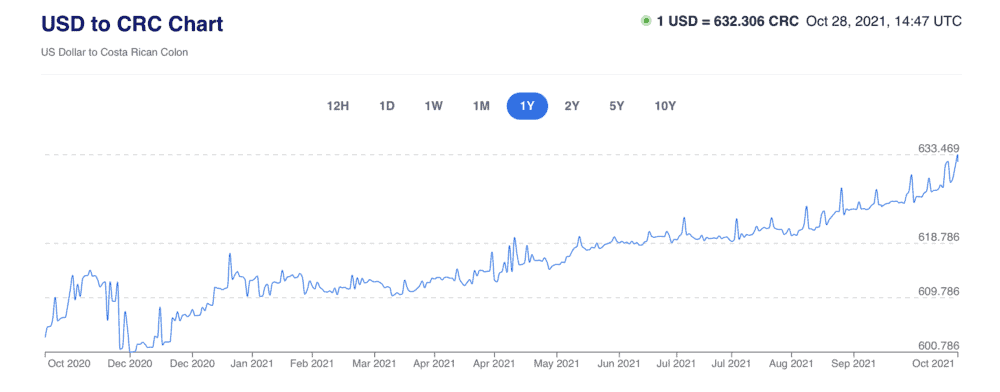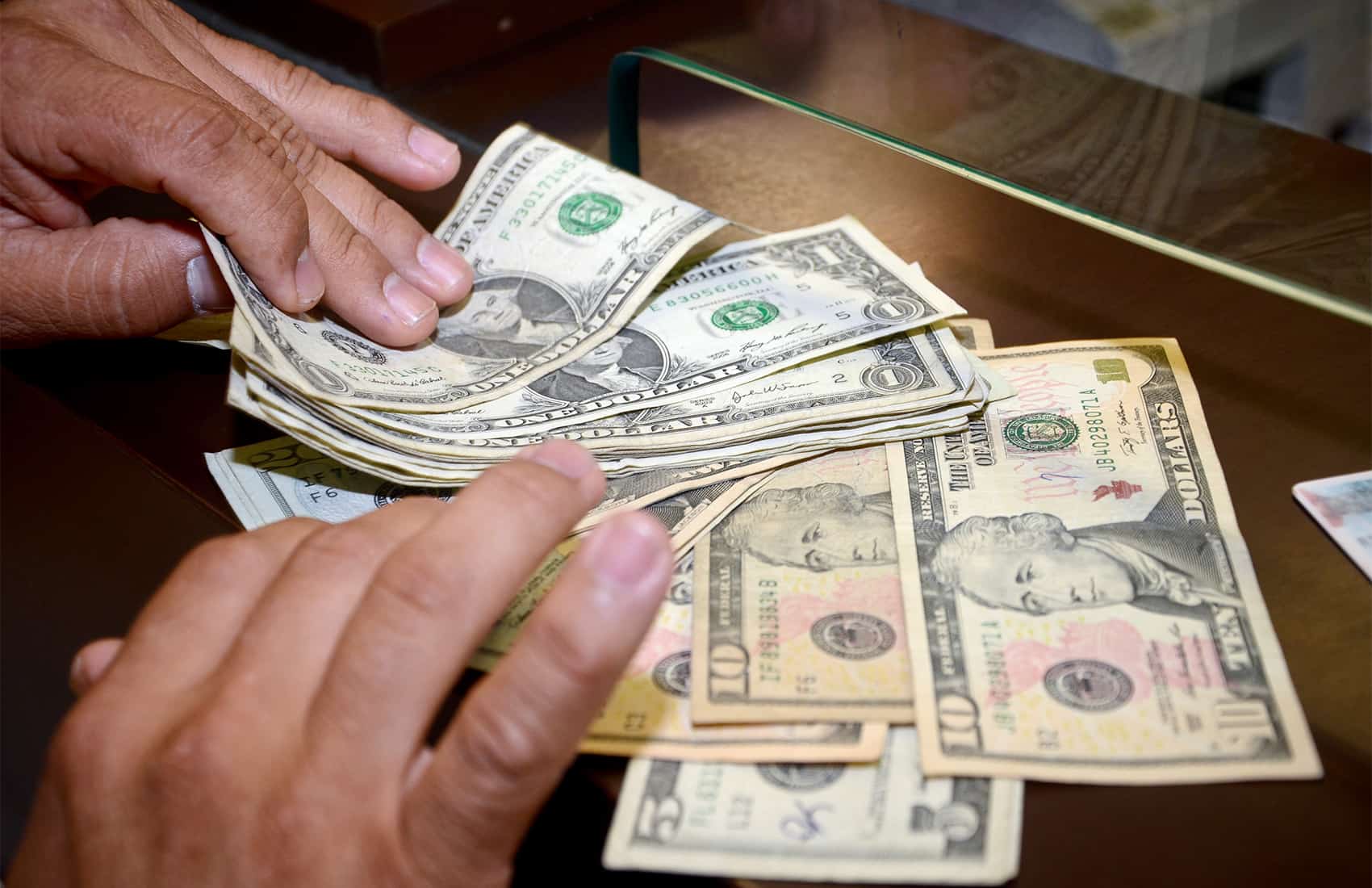The exchange rate of the Costa Rican colón against the dollar increased by ₡10 during the past month, according to official data from the Central Bank of Costa Rica.
On September 29, the Central Bank set a sale price of ₡629, while the official price on Thursday was of ₡640 for a dollar, a figure that has risen steadily throughout 2021.

It’s the first time the exchange rate has reached ₡640, La República reported.
Economist Roxana Morales shared five reasons for the trend with Semanario Universidad:
- Seasonal variations: The demand for dollars typically increases between September and November due to the upcoming holiday season and year-end payments.
- Import costs: These could be rising, due in part to global supply chain issues. This coincides with an increased demand for imports during the pandemic-related economic recovery.
- Inflation: The price levels of the countries with which Costa Rica trades may have increased.
- Fuel prices: An increase in the international price of fuels raises the demand for dollars.
- Speculation: In the face of uncertainty, people purchase dollars in order to protect their money, further increasing the demand for dollars.
“The movements that have been taking place are considered normal under the exchange rate scheme that the country has,” Morales told Semanario Universidad.
Daniel Suchar, a financial analyst, told La República the public “doesn’t need to be alarmed” at the exchange rate.
“For 17 years, Costa Rica has not had a devaluation of more than 25%,” he said. “What is happening is a dollar that rises little by little, colón by colón.”
The Central Bank on Thursday sold $6.1 million in an attempt to stabilize the exchange rate, Teletica reported. Its previous intervention was in September of this year.
This story was updated at 10 a.m. with news of the Central Bank’s intervention.

